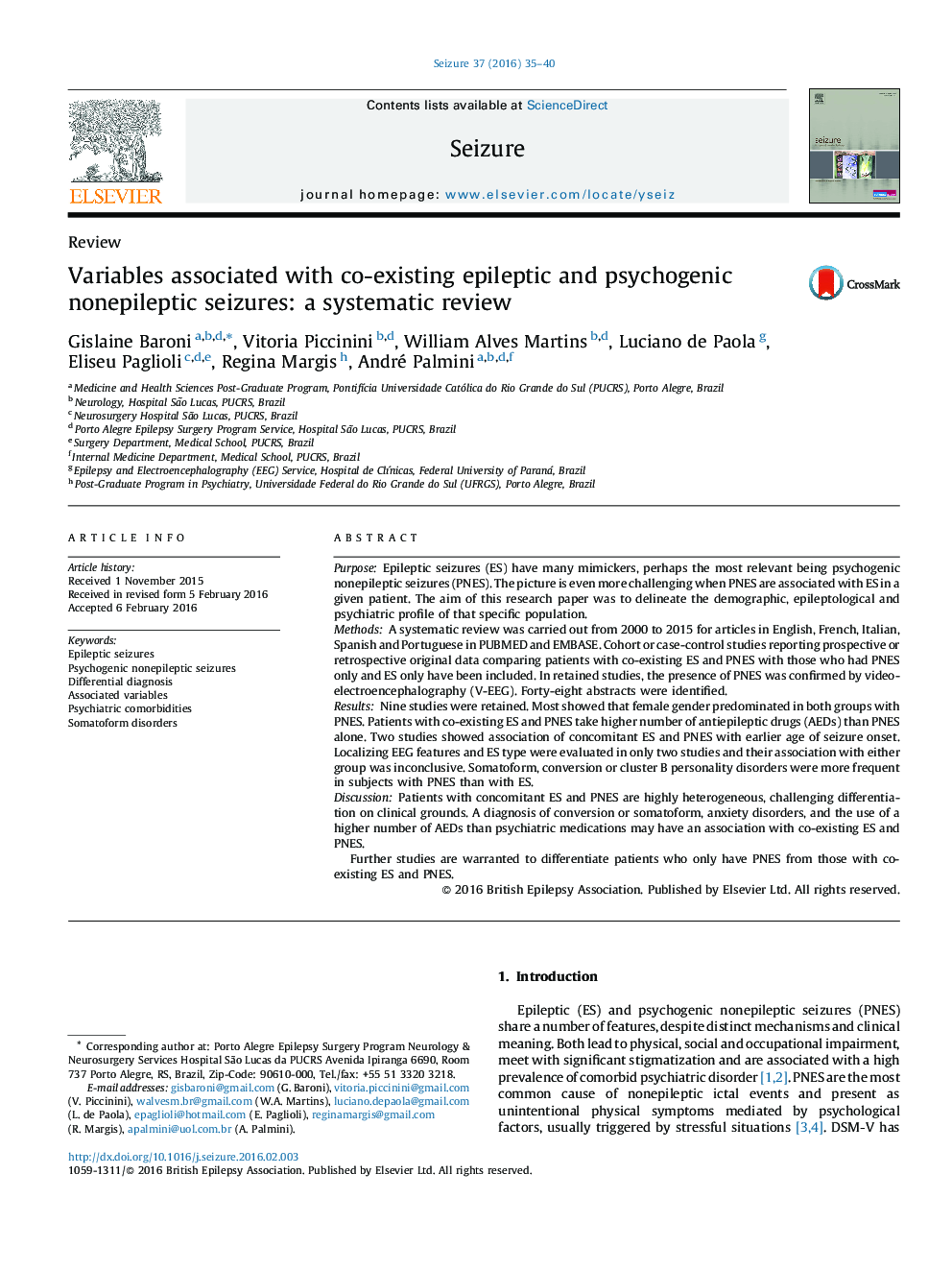| Article ID | Journal | Published Year | Pages | File Type |
|---|---|---|---|---|
| 340959 | Seizure | 2016 | 6 Pages |
•Systematic review of variables associated with co-existing ES and PNES.•Studies of patients with associated ES and PNES are heterogeneous, precluding formal meta-analysis.•A consistent and uniform set of variables is not within current clinical reach.•A diagnosis of conversion disorder is suggestive of co-existing ES and PNES in patients who certainly have ES.•Patients with co-existing ES and PNES take higher number of AED than PNES only.
PurposeEpileptic seizures (ES) have many mimickers, perhaps the most relevant being psychogenic nonepileptic seizures (PNES). The picture is even more challenging when PNES are associated with ES in a given patient. The aim of this research paper was to delineate the demographic, epileptological and psychiatric profile of that specific population.MethodsA systematic review was carried out from 2000 to 2015 for articles in English, French, Italian, Spanish and Portuguese in PUBMED and EMBASE. Cohort or case-control studies reporting prospective or retrospective original data comparing patients with co-existing ES and PNES with those who had PNES only and ES only have been included. In retained studies, the presence of PNES was confirmed by video-electroencephalography (V-EEG). Forty-eight abstracts were identified.ResultsNine studies were retained. Most showed that female gender predominated in both groups with PNES. Patients with co-existing ES and PNES take higher number of antiepileptic drugs (AEDs) than PNES alone. Two studies showed association of concomitant ES and PNES with earlier age of seizure onset. Localizing EEG features and ES type were evaluated in only two studies and their association with either group was inconclusive. Somatoform, conversion or cluster B personality disorders were more frequent in subjects with PNES than with ES.DiscussionPatients with concomitant ES and PNES are highly heterogeneous, challenging differentiation on clinical grounds. A diagnosis of conversion or somatoform, anxiety disorders, and the use of a higher number of AEDs than psychiatric medications may have an association with co-existing ES and PNES.Further studies are warranted to differentiate patients who only have PNES from those with co-existing ES and PNES.
